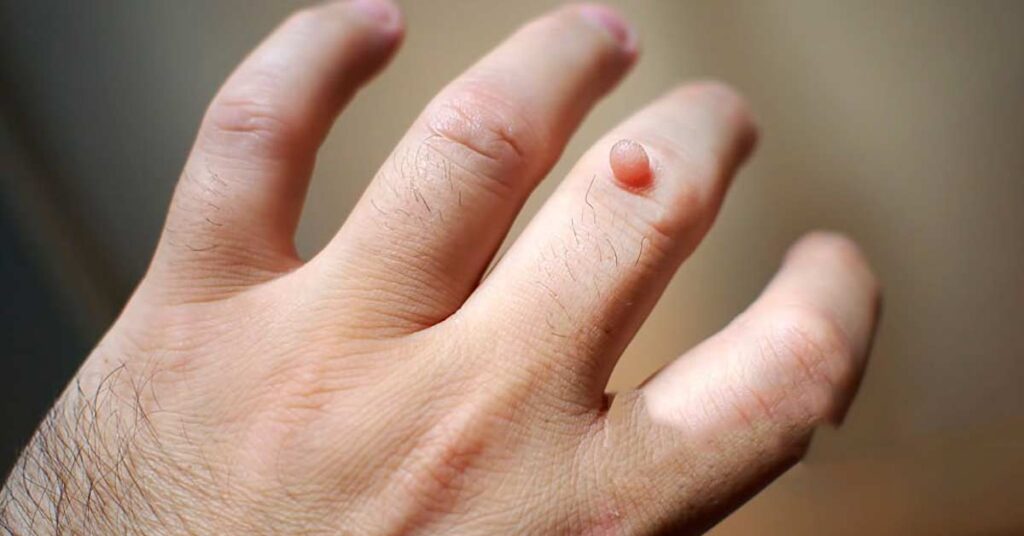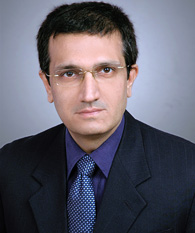Skin growths known as warts are brought on by the human papillomavirus (HPV). There are over a hundred varieties of HPV, and some of them can result in skin warts. Direct contact with the contagious HPV virus is the cause of warts. HPV can transfer among people or through direct contact with an infected person’s contaminated object. The virus that causes warts can also travel to other areas of the wart-affected person’s body. We can distinguish between warts based on the location of their growth. Now, let’s look at its causes, treatments, and prevention.
How Do You Identify Warts?
Warts are tiny skin growths that result from viral infections. Depending on the type, warts can have a broad range of appearances. They can grow on stalks or show up as skin tags or lumps on the skin. Some appear as black dots on callused skin. Warts can be black, smooth, or flat but usually rough and skin-colored.
Warts often do not cause other symptoms, though they can be uncomfortable, tight, itchy, or cause a pressure-like sensation. Warts are caused by several strains of the human papillomavirus (HPV). You should speak with a dermatologist for warts removal if you have any of these symptoms. Let’s become familiar with the various types of warts.
What Are The Common Types Of Warts?
The type of wart a person possesses is determined by its appearance and location. The following are a few varieties of warts brought on by HPV:
- Common warts are seen on the hands or fingers and typically have the traditional appearance described above.
- Plantar warts are found on the bottom of the foot and can occasionally spread internally, making walking painful.
- Flat warts are more frequent in youngsters than in adults. They usually appear as several tiny, slightly elevated lumps.
- Genital warts are a kind of STD that have been linked to different cancers, including cervical cancer.
What Are The Main Causes Of Warts?
Warts are caused by specific strains of the human papillomavirus (HPV). The virus can enter your skin through minor cuts and promote the growth of new cells. Warts develop when the outer layer of your skin thickens and hardens. Warts are more likely to develop on wet or injured skin.
While HPV is the source of all warts, not all HPV infections result in warts. Warts are not caused by the form of HPV that can develop into cancer, such as cervical cancer.
Direct or indirect touch might result in the spread of warts. Skin-to-skin contact or touching someone else’s wart would be considered direct contact. Using towels or razors that have come into contact with a wart or HPV is an example of indirect contact.
The Treatments Available For Warts
Skin warts are usually benign and may disappear without medical treatment. That also applies to flat warts, though their disappearance could take several months or even years. Nonetheless, a physician should examine genital warts.
After therapy, warts might resurface, and multiple types of treatment may be required. Among the treatments are:
Cantharidin
Cantharidin is applied to the wart by a dermatologist, which causes a blister to develop underneath. The patient can go back to the dermatologist in about a week to have the wart removed.
Cryotherapy
With liquid nitrogen, the warts are frozen. Regular cryotherapy may be necessary for up to four months to eradicate the warts.
Electrocautery and currettage
Surgical treatment was carried out while under local anaesthesia. Curettaging the wart and applying cauterisation to its base removes it. Though it could leave a scar, the incision usually heals in seven to ten days.
Laser treatment
The warts are burned out with a laser. There could be scarring.
Bleomycin
Bleomycin, an anti-cancer medication, is injected into the wart by the dermatologist as part of this treatment. If these injections are given into the fingers, they may hurt or result in nail loss.
Immunotherapy
When traditional therapies for warts are ineffective, immunotherapy can be helpful. A dermatologist could employ a substance that triggers a moderate allergic reaction to eliminate warts.
Conclusion
Although warts are usually not harmful, they occasionally cause pain and discomfort. Many forms of warts can be treated with over-the-counter medications; however, if your wart changes colour, becomes painful, or you have any suspicions that it may not be a wart, you should schedule an appointment with a dermatologist at the National Skin Centre.


